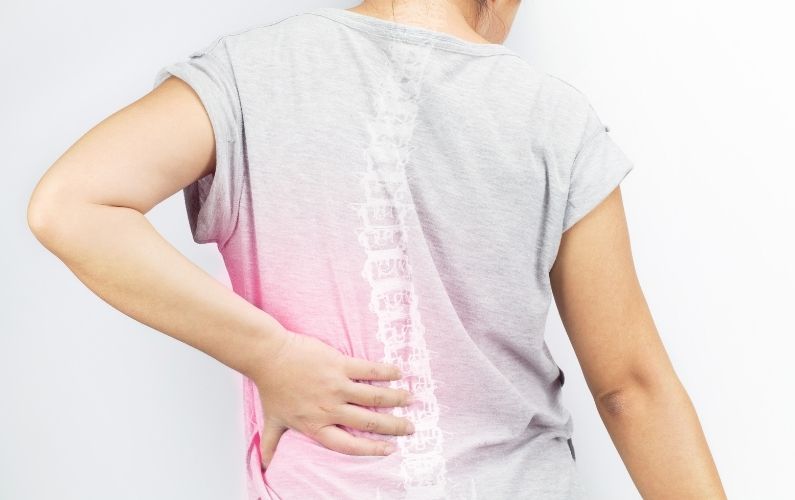How to Manage Osteoporosis: Prevention and Treatment

Are you unsure how to manage osteoporosis symptoms? Read on to learn about key treatment and prevention options available.
Did you know that two million Canadians are affected by osteoporosis? Further, the number of people suffering from hip fractures due to osteoporosis is likely to quadruple by 2030. These statistics highlight the importance of understanding both the preventative and treatment options available for this serious condition.
Before addressing the symptoms, causes, and treatment for osteoporosis, let’s review what it is.
What is Osteoporosis?
Osteoporosis is a condition that primarily affects the bones. It occurs when the bones become weak, and the spaces in them increase in size. Not only can osteoporosis increase the risk of fractures and bone breaks, but it can also lead to other problems that can significantly affect quality of life.
While osteoporosis can affect both young and old, it is more common among the elderly, especially women, after menopause.

Symptoms of Osteoporosis
Osteoporosis can cause your bones to become weak and brittle. Sometimes, they can become so brittle that even a small fall can cause a fracture. These fractures typically occur in the hips, spine, and wrist area.
During its early stages, bone loss may not show any symptoms. However, in many cases, people find out that they have osteoporosis only when they experience a fracture. Additional early osteoporosis symptoms include weak and brittle nails, gums that start to recede, and back pain. If you experience such symptoms, you should speak with your healthcare professional.
Causes of Osteoporosis
Now that you know what osteoporosis is, let’s discuss what causes it in the first place. Bones become fully developed by the age of 30. From then on, bone mass starts to suffer natural loss. The growth of new bones cannot match up to the loss, unfortunately. Though this is a natural component of the ageing process, some people are prone to excessive bone loss. These higher-risk groups include the elderly, post-menopausal women, and people with small body frames.
Here are some other factors that can cause increased bone loss:
- Lower levels of sex hormones can affect bone strength. This is why women are more prone to osteoporosis after menopause.
- Excess thyroid hormones
- An overactive adrenal or parathyroid gland
- People with inadequate calcium intake and those who are excessively underweight
- People leading a sedentary lifestyle
- Those who use tobacco and consume alcohol
- Taking steroids for a long time
- Some medical conditions like cancer, seizures, and transplant rejection can lead to osteoporosis
Osteoporosis Treatment Options
Osteoporosis treatment mainly focuses on medications that can reduce bone loss and improve bone density. Healthcare professionals can also recommend therapeutic options for pain and bone fractures resulting from osteoporosis. Additionally, people with osteoporosis can take certain supplements that increase calcium, vitamin D, and other minerals that improve bone health.
Although there are many treatment options available, it’s important to know that osteoporosis has no cure. Likewise, the primary goal of treatment is to reduce bone loss and strengthen bones.

Here are some additional measures to prevent further problems and fractures:
- Wearing footwear with anti-slip soles to prevent falls that can cause fractures.
- Checking the house for anything that could cause falls like a slippery floor, cables lying around, etc.
- Avoiding alcohol and stopping smoking as they increase the risk of bone loss.
Osteoporosis Prevention Tips
Osteoporosis prevention is a must for those who are at risk of developing this condition. It is essential to start taking preventive measures to reduce bone loss and strengthen the bones as early as possible. Anyone with a family history of osteoporosis should consider such options. These measures do not guarantee that a person won’t suffer from this condition; however, they can reduce risk significantly.
Here are some prevention tips to consider:
- Adequate protein consumption improves bone health. Vegetarians can face a shortage of dietary proteins and should consume more food with proteins.
- Being underweight or having excess weight can increase your risk. Weight control is vital for bone health.
- Calcium and vitamin D contribute to bone health. Exposure to the morning sun and taking low-fat dairy products can be helpful. Calcium-fortified cereals, dark green leafy vegetables, and soy products are also beneficial.
- Weight-bearing exercises can help strengthen the bones. However, they must be done under proper supervision.
- Avoid a sedentary lifestyle. Do your best to be physically active to improve your bone health.
- Hormone therapy for women after menopause can help prevent bone loss.
Next Steps
If you or someone you are taking care of is suffering from osteoporosis symptoms, know that treatment can help.
At Wellness Pharmacy, you can find medications and supplements that can help with both treatment and prevention. Speak with one of our Pharmacists today to learn more about prescription medication options for osteoporosis or to ask any questions you may have.
Sources:
https://www.healthlinkbc.ca/health-topics/hw131419
https://www.endocrineweb.com/conditions/osteoporosis/prevention-treatment-osteoporosis https://www.healthline.com/health/osteoporosis
https://www.mayoclinic.org/diseases-conditions/osteoporosis/diagnosis-treatment/drc-20351974


